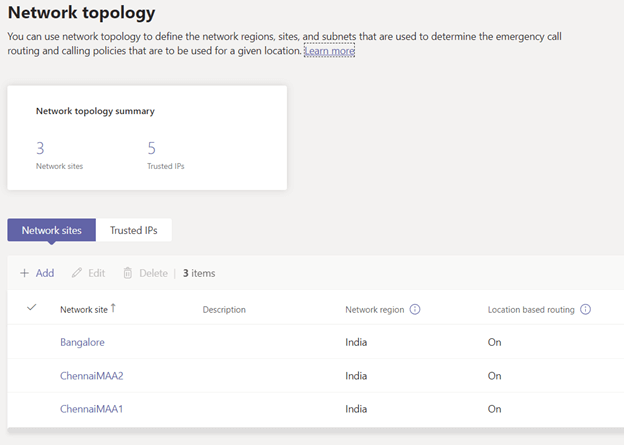Goal
Microsoft Teams is a natural evolution step for a Global company that uses Skype for Business for UC collaboration. Let us present a case study of one of our successful SFB to Teams migration project:
Client: Banking software industry
Locations: Switzerland HQ, 62 offices across 39 countries
UC: collaboration, meetings, PSTN calling, federation
User base: more than 8000 users
Voice platform: Cisco CUCM, Skype for Business, Ribbon SBC
The project aim is to migrate all users to Microsoft Teams but also decommission aging Cisco voice system.
Solution
We started with a PoC and implemented Teams Direct Routing on existing Ribbon SBC 1000. SBC was connected to 3 different SIP trunk providers, SFB, Polycom Video conferencing, CUCM and now Teams. This allowed to keep all systems connected and assured selective gradual migration from SFB to Teams.
So far all users had already Teams client alongside of Skype for Business, but there was no integration, systems were left in Islands mode. This mode allows users to start using Teams collaboration with no dependency on SFB, but is very confusing for users, as most of functions are also duplicated in Skype for Business with few exceptions. As example, it is not possible to talk to federated partners from Teams Island. The better ways of integration are
- Skype for Business only
- Skype for Business with Teams collaboration
- Skype for Business with Teams collaboration and meetings
- Teams only
Each function is available in a specific application and there is no overalap.
Our goal was to provide the quickest way to Teams and we selected overnight migration from SFB to Teams only mode. SFB hybrid prerequisite was already set and we implemented PoC with 5 users in Teams only. These Teams users could chat, call and do meetings with their colleagues in SFB and federated partners, as well as call to PSTN. One small inconvenience remains, when these users talk with SFB and then SFB user escalated p2p call to a meeting, the p2p abruptly stops and Teams users receives URL invitation to join SFB meeting. This will naturally disappear when all users will move to Teams.
Concerning PSTN integration in Teams. Teams can be connected to PSTN with
- Calling plan – Microsoft provides PSTN numbers in selected countries
- Direct Routing – bring your own SIP trunk into Teams
We have decided to use Direct Routing to re-use existing connections to operators in many locations, especially due to local restriction and limited availability of Calling plans in some countries.

Few words about Ribbon SBC. It is very easy to deploy Teams Direct routing with Ribbon. Ribbon SBC 1k/2k platform was one of the first to get Direct routing certification from Microsoft. Ribbon supports SILK codec that is very efficient to carry voice over Internet lines in absence of QoS.

PoC provided an important point to of attention – Firewall rules. It is very important to calculate well the use case, as there are two distinctive modes on how Teams SBC is functioning: media bypass ON or OFF. Media bypass allows clients to avoid connections to remote Teams tenant proxy and send voice directly to nearly located SBC. Imagine you are using Teams in Switzerland very close to your SBC, but with Media bypass OFF, your voice travels to Teams servers in USA where your tenant is located. With Media bypass ON, it will travel to nearby SBC and thus provide a better voice quality. The down side of Media bypass is that you need to open firewall ports to ANY internet client. With media bypass OFF, we have opportunity to open ports only to Microsoft Teams servers. Client decision was to use Media bypass OFF in most locations, except where it is required.
After the PoC a rollout was scheduled and it took from April to July to rollout in:
Greece, France, UK (2), Luxemburg, Romania, USA (2), Ecuador, Costa Rica, Mexico, Canada, India (3), Singapore, Australia, Switzerland (2)
Switzerland SBCs are redundant and connected to 3 different SIP operators to act as Central hub delivering PSTN services with local numbers for Switzerland, Netherlands, Ireland, UK, Germany, South Africa and few other countries.
Few challenges were solved for India locations. Due to office sizes and locations 3 Ribbon SBC were deployed to replace existing Cisco CUCM voice. India authority TRAI requires that Location Based Routing and Logical partitioning between PSTN and VOIP calls are established. Fortunately Teams has the mechanisms to satisfy TRAI requirements – https://www.microsoft.com/itshowcase/blog/location-based-routing-enables-microsoft-india-move-to-microsoft-teams/
We implemented location based routing (LBR) for India Teams:

The LBR logic analyses IP address of a Teams client and decides if PSTN call is allowed or not from that location.
Chennai offices use two alternative PSTN operators. Due to special contact conditions both operator must be used to deliver the calls. We implemented Ribbon “Time of the day routing” feature to satisfy this requirement. This allows to distribute call traffic 50/50 between two concurrent operators.

Benefits
At this stage cornerstone infrastructure has been successfully deployed, the client continues to gradually migrate users by small groups to Teams.
Nous partageons vos défis, nous accompagnons vos changements
Que ce soit pour une simple question ou une suggestion, nous sommes à votre disposition pour y répondre par email ou par téléphone.
S’inscrire
Recevoir des notifications sur nos derniers projets
*seuls les courriels professionnels peuvent être abonnés à cette newsletter
